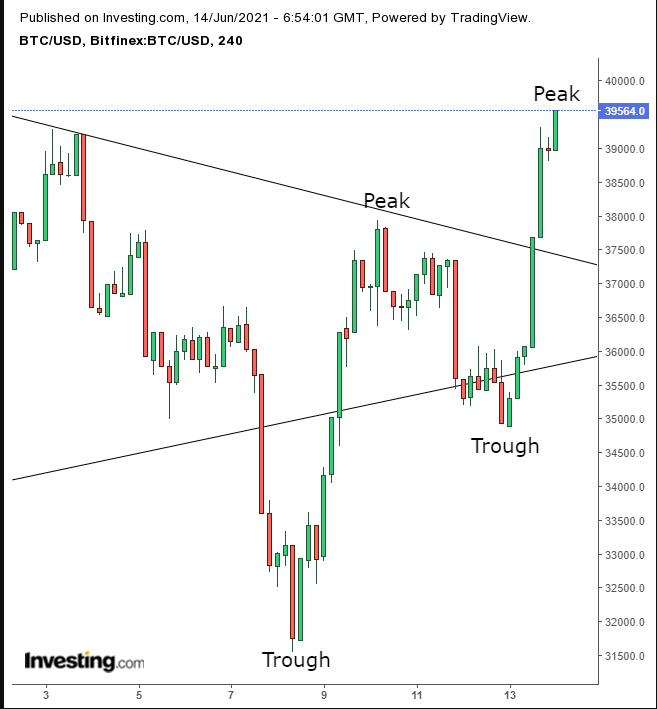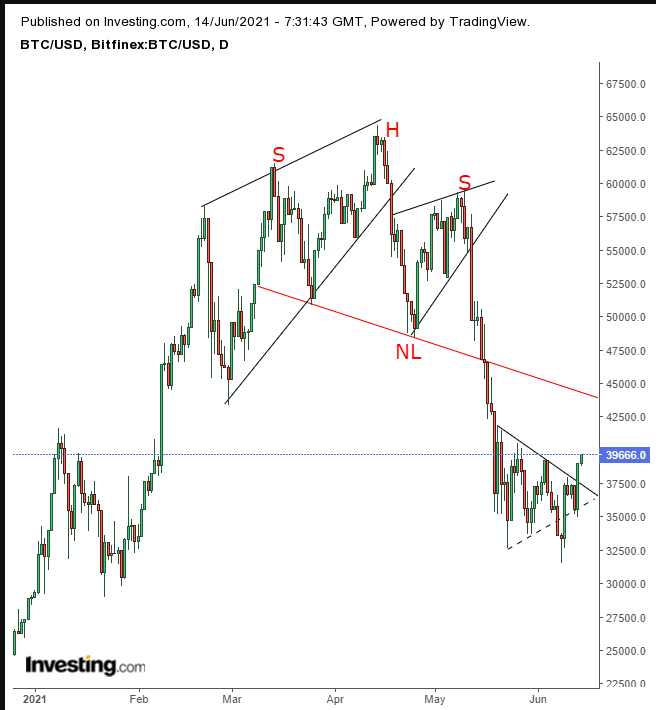The price of Bitcoin has been gyrating wildly, going back and forth on its trend.
We started warning of a fall in the price of the cryptocurrency on Apr. 11 and again in mid-April, when Bitcoin was hitting all-time highs. We issued an outright sell call on May 6, when the price was climbing past $58,000 and set a target at $30,000 and have reiterated our position a number of times since.
On May 20, after the digital token leader fell below $40,000, we suggested it may recover, but then on June 8, we identified a short term bearish pattern and entered that into our trajectory. That short-term bearish pattern, however, flipped, and now we’re starting the next chapter in the adventures of Bitcoin.

The digital asset has entered a short-term uptrend.

Bitcoin blew out its bearish pennant, forcefully reversing the market mechanism. That kind of about face can produce a powerful move in the opposite direction to the one traders originally intended.
If traders expected the pennant to lead to a fall and shorted the contract, now they are forced to buy Bitcoin to return it to the broker, adding to demand. This sudden upward push is liable to motivate bulls to jump in haphazardly.
In addition, traders looking for a trade may think they recognize one and add their weight into the position. In this scenario, we have most of the market pushing in the same direction—upward.
Having said that, it’s important to keep your bearing. When Bitcoin is above $44,000, it extends the neckline of a H&S top, which may still be a stronghold of supply. Therefore, at this point, we are considering the price between $37,000 and $43,000 as fair game—the space between support and resistance—and we are trading amid these prices.
Trading Strategies – Long Position Setup
Conservative traders should wait for the price to trigger a return move to verify support above the wedge.
Moderate traders would wait for the same dip, for the better entry, if not for further confirmation.
Aggressive traders could enter at will, provided they are acting according to a predetermined, coherent plan that reflects their risk tolerance and has an exit strategy. Here’s an example:
Trade Sample
- Entry: $38,000
- Stop:Loss: $37,000
- Risk: $1,000
- Target: $42,000
- Reward: $4,000
- Risk:Reward Ratio: 1:4
